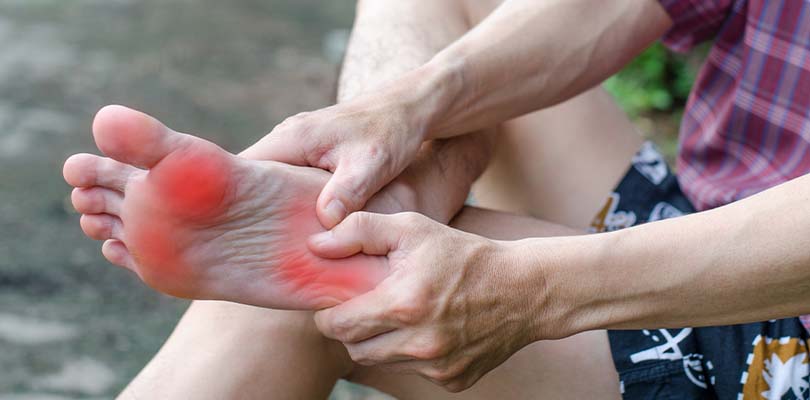Photo Credit: Wavebreakmedia / iStockphoto.com
Why Good Posture Matters
I remember as a child walking with my sisters while carrying books on our heads to improve our postures. Standing erect and carrying ourselves well helps us to appear taller, and sometimes even thinner. But good posture matters and is much more than just creating an attractive appearance — it helps our bodies to perform well.
Breathe Better
Good posture helps your body to function well mechanically and chemically. By holding your body erect, you provide your diaphragm with the space it needs to rise and fall, allowing your lungs to fill and empty efficiently.
Oxygen is transported from your lungs to your bloodstream and throughout your entire body. Meanwhile, carbon dioxide and other waste products are efficiently eliminated from your tissues. Proper oxygenation helps each cell in your body to function well.
Getting adequate oxygen improves your brain function; you may experience less fatigue and clearer thinking simply by sitting up straight. With good posture your heart does not have to expend excess energy as it pumps to circulate blood throughout your body. Waste products that cause disease and accelerate the aging process are removed promptly.
Avoid Infections
Good posture may help to prevent you from getting sick. By allowing your lungs to expand and contract efficiently, tissues in the respiratory tract do not become stagnant breeding grounds for microorganisms to lodge and multiply in.
Your blood is not the only liquid in your body that must be able to flow freely. Your lymphatic fluid and the liquid your cells are suspended in must be unimpaired. Good posture ensures that fluid movement is not impeded.
Rid Yourself of Aches and Pains
Aches, soreness, muscle and connective tissue strains will be less likely to occur if you keep your body aligned properly.
It is important to get in the habit of using good posture while you are young. As you age, your tissues lose flexibility, underused muscles may shrink, and permanent deformity may arise.
Many age-related illnesses, including arthritis and respiratory diseases, cause deformities of the skeleton. If you have spent your life bent over, the effects of these illnesses may be more pronounced. You may also be more prone to contracting respiratory infections.
If you have poor posture when you are older, you may be unable to stand up straight. You may be more prone to injury due to falls.
Effects Beyond the Physical
Astigmatism is a common vision condition that causes blurred or wavy vision. Read all about the causes, symptoms, and treatment options here.
Sitting erect shows the world that you are confident. Simply sitting up straight may even make you feel more confident in your own abilities. How you carry yourself while walking and how you sit are among the first qualities that people notice about you. Good posture can help you to make a positive first impression, which can have positive implications in your personal and professional life.
How to Improve Your Posture at Home
My sisters and I were using an excellent technique for improving our posture when we walked around with books on our heads. This is an easy technique to try at home. Use a book that is not too heavy and has a cover that isn’t slippery for best results.
Other things you can do at home to improve your posture include:
- Avoid wearing high heels. Wear properly fitting footwear.
- One of the most effective ways that you can improve your posture is simply by practicing awareness of how you hold your body. Take a look in a full length mirror to identify how you sit, stand and walk.
- It will be easier for you to have good posture if you exercise regularly. Strong muscles help to keep your body in good alignment.
- Consider making an appointment with a chiropractor for an evaluation and spinal adjustments. Ask the chiropractor for exercise recommendations.
- Sleep on a firm mattress, and avoid sleeping on your stomach. Select pillows that are neither too high nor too flat.
- Maintain a healthy weight. If you need to lose weight, do it.
- Choose chairs that are ergonomically beneficial and change your position frequently. Work at counters and tables that are the correct height for you.
- Take steps to protect your back from injury.
Posture and Gait Assessment
Most people can take steps at home to improve their posture. However, some individuals may benefit by having a diagnostic test called a posture and gait assessment.
A posture and gait assessment shows how the entire body functions. It is used to locate weaknesses, muscle tightness and sources of discomfort. The assessment is most often used to find out the cause of musculo-skeletal problems but is also s used to assess breathing problems and childhood development. Sometimes posture and gait assessments are used to diagnose issues that arise due to diseases such as arthritis or strokes.
If you are having a posture and gait assessment done, you will be asked to demonstrate how you walk, sit, and stand. The assessor will observe your ability to balance and walk and your range of motion will be evaluated.
A posture and gait assessment is a valuable diagnostic tool. It can be used to determine causes of health issues not visible even when advanced imaging equipment is utilized because imaging tests, such as MRIs and CT scanners, are performed while you are lie still. A posture and gait assessment is performed by highly-trained professionals who see how your body responds while it is in motion.
After a comprehensive posture and gait assessment is conducted, exercises and other therapies are prescribed.
Final Thoughts
The earlier you become aware of your posture, the more successful you will be in ensuring you are able to reap the rewards that a lifetime of good posture offers.







